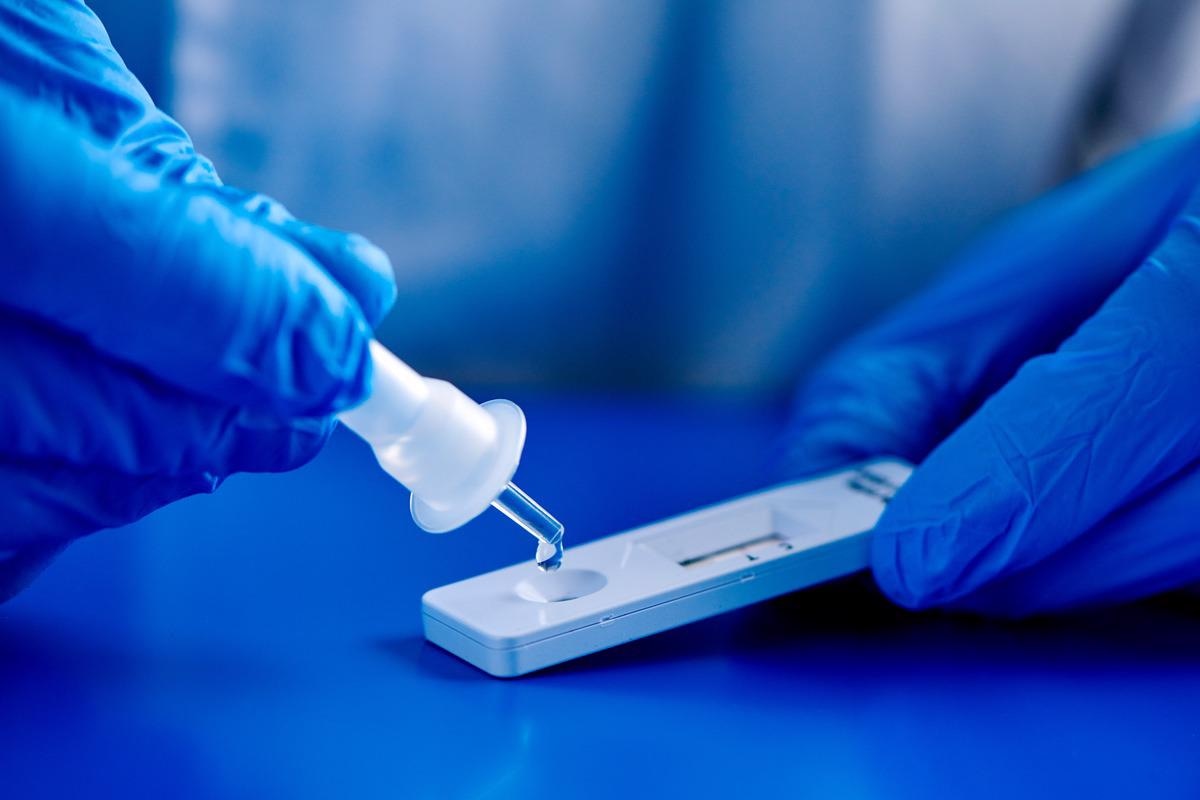In a recent retrospective cross-sectional study posted to The Lancet* preprint server, researchers assessed rapid antigen (Ag) tests for identifying severe acute respiratory syndrome coronavirus-2 (SARS-CoV-2).
 Study: Evaluation of a Novel SARS-CoV-2 Rapid Antigenic Test Diagnostic Value in Respiratory Samples; is the Reported Test Accuracy Similar to Values in Real-World? Image Credit: nito/Shutterstock
Study: Evaluation of a Novel SARS-CoV-2 Rapid Antigenic Test Diagnostic Value in Respiratory Samples; is the Reported Test Accuracy Similar to Values in Real-World? Image Credit: nito/Shutterstock
The coronavirus disease 2019 (COVID-19) pandemic, with over 300 million infections across the globe, remains a serious public health crisis. The COVID-19 infection spreads from the infected to the healthy population, primarily in the form of respiratory droplets. Infection control measures, such as wearing masks, physical distancing, avoiding crowded areas, using sanitizers, and clean ventilation systems, are implemented to curb the transmission of SARS-CoV-2.
SARS-CoV-2, the causative agent of COVID-19, is a single-stranded (ss), positive-sense, ribonucleic acid (RNA) virus classified under the Coronaviridae family. It is detected in clinical specimens using the reverse transcription-polymerase chain reaction (RT-PCR) test that uses primers to amplify SARS-CoV-2 target genes., On the other hand, Ag tests use a monoclonal antibody with a high affinity to bind to its target to detect SARS-CoV-2 Ag.
Although RT-PCR is regarded as the gold standard test for SARS-CoV-2 detection, it is expensive and requires around four hours to complete the protocol and expert handling; therefore, low-cost Ag tests were developed that offer instant results without the need of skilled personnel.
Rapid Ag tests have certain other advantages over RT-PCR testing, such as hassle-free transportation of testing kits and rapid results, albeit false-negative results are also frequently observed with rapid Ag tests.
The study
In the present study, a team of researchers conducted a mass survey of COVID-19 patients between January 20, 2021, and July 22, 2021, to evaluate a new SARS-CoV-2 Ag diagnostic test developed by E-Health Barakat Company in Iran. Based on earlier studies, the authors performed the Ag tests on COVID-19 patients on day five of infection when the viral load peaks, and they monitored Ag test results in parallel with RT-PCR tests.
Collected nasopharyngeal swabs were mixed with kit-supplied buffer solution and drawn on the cassette provided by the manufacturer to determine the test positivity. The cassette contained two labels – control (C) and test (T); if the sample contains SARS-CoV-2, two red lines formed on the cassette, indicating a positive result.
Findings
Around 537 patients were tested for SARS-CoV-2 infection by both RT-PCR and rapid Ag tests, and the mean age of the patients was 46.93 years. The researchers detected 128 SARS-CoV-2-positive samples by RT-PCR testing, while Ag tests reported only 32 positive results in the study population. Of the RT-PCR-positive cases, 18.01% were obese and 43.3% were overweight. The findings revealed that over half of them had respiratory symptoms and fatigue, while fever was noted in one-third of the patients.
The sensitivity of the rapid Ag test was found to be 21.09% as opposed to 81% stated by the manufacturer, and the 98.78% specificity evaluated in this study was slightly higher than the manufacturer's data (97%). The positive predictive value was 84.38%, the negative predictive value was 80%, the likelihood ratio (LR) was 17.25% for a positive test and 0.8% for a negative test, and the infection prevalence rate was 23.34%.
Conclusions
The study demonstrated a marked reduction in the sensitivity of Ag assay when tested in real-time. A few possible reasons for the low sensitivity observed with Ag tests could be the difference in sample quality drawn in real-world conditions and controlled laboratory settings. Further, the testing was done on the fifth day after developing COVID-19, which could have eroded the effect of cycle threshold (Ct) values. Overall, the study results proved that the Ag tests are far less efficient than the RT-PCR tests in detecting SARS-CoV-2-positive specimens.
The study noted that over half of the infected patients were males, consistent with previous findings showing increased risk of SARS-CoV-2 infection in males compared to females. The researchers found that obese and older patients were more likely to develop severe COVID-19 than others.
Despite the modest sensitivity of Ag tests reported by the present study, they can be deployed in mass testing of a population because they provide faster results and rapid screening at an affordable price.
*Important notice
The Lancet preprints publish scientific reports that are not peer-reviewed and, therefore, should not be regarded as conclusive, guide clinical practice/health-related behavior, or treated as established information.
- Hatami, Hossein and Rezaeian, AhmadReza. (2022). Evaluation of a Novel SARS-CoV-2 Rapid Antigenic Test Diagnostic Value in Respiratory Samples; is the Reported Test Accuracy Similar to Values in Real-World? Preprints with the Lancet. doi: http://dx.doi.org/10.2139/ssrn.4007174 https://ssrn.com/abstract=4007174
Posted in: Medical Science News | Medical Research News | Disease/Infection News
Tags: Antibody, Antigen, Assay, Coronavirus, Coronavirus Disease COVID-19, covid-19, CT, Diagnostic, Fatigue, Fever, Genes, Infection Control, Laboratory, Monoclonal Antibody, Nasopharyngeal, Pandemic, Polymerase, Polymerase Chain Reaction, Public Health, Respiratory, Ribonucleic Acid, RNA, SARS, SARS-CoV-2, Severe Acute Respiratory, Severe Acute Respiratory Syndrome, Syndrome, Transcription, Virus

Written by
Tarun Sai Lomte
Tarun is a writer based in Hyderabad, India. He has a Master’s degree in Biotechnology from the University of Hyderabad and is enthusiastic about scientific research. He enjoys reading research papers and literature reviews and is passionate about writing.
Source: Read Full Article
